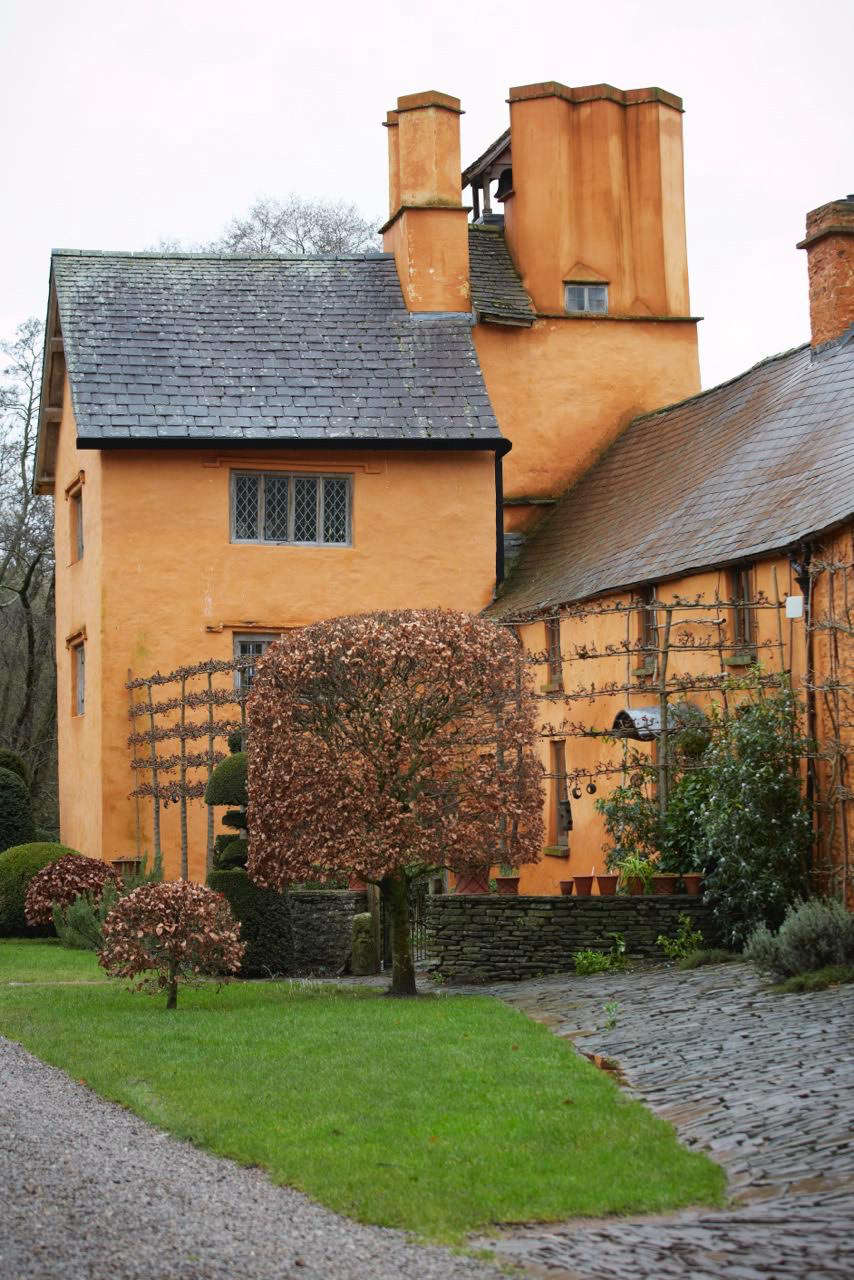Pleached trees look luxurious. Formal French gardens come to mind; Marie Antoinette in her milkmaid’s costume looked just right against a row of trees trained to grow as flat as a scene on a theater backdrop.
There is something about pleaching that seems just the tiniest bit…obsessive. To pleach is to plant young, malleable trees in a row—preferably in a very, very straight line—and then bend them to your will. Over the years, you braid their branches and coax them to grow into a nearly one-dimensional version of their best selves. This sends a strong message to the other garden plants that the humans are in charge here, and they like things neat.
And yet the old-fashioned technique of pleaching is suddenly popular again. Pleaching adds a a strong architectural element to any garden. Are you up for the challenge? Pleaching is a technique you can master with a pair of sharp pruners and some patience; we’ll walk you through the steps. For inspiration, we take you to home of garden designer Arne Maynard in Wales, where a pleached hedge of crabapples at the edge of a cobblestone courtyard frames the garden:
N.B.: Maynard runs series of garden courses at Allt-y-bela and other gardens throughout the year; for more details, see Arne Maynard.
Photography by Britt Willoughby-Dyer.
Above: Visible behind a copper-leaved beech, at Allt-y-bela pleached crabapple trees are trained against hazel poles. In a line of pleached trees, bare trunks are visible (distinguishing the look from a row of shrubs).
What trees are best to pleach?
Start with young, pliable trees with very straight trunks. Hornbeam, linden, and fruit trees are popular choices. You can buy young trees that already have been trained against a frame, giving them a head start. Look for trees with straight branches that grow out at a 45-degree angle from the trunk.
Above: At Allt-y-Bela, head gardener Steve Lannin shapes the crabapples when the trees are dormant in winter. The trees are kept close-clipped to create a lacy veil effect against the facade of the house.
What are some sources for pleached or espaliered trees?
In the UK, nurseries such as Majestic Trees and Insta Hedge sell pleached specimens. In the US, growers such as Raintree Nursery and Yamagamis Nursery sell espaliered trees trained to grow flat.
Above: Lannin cuts back new growth four or five buds above the basal rosette. He waits until the weather turns cold to prevent the trees from putting out new growth from below the cut.
How do I train pleached trees?
When trees are young, thin branches are flexible and can be bent and tied against a trellis or frame. Cut off any branches that don’t want to bend.
Weave together supple young shoots and tie them onto the framework with twine. Don’t force branches that don’t want to bend. It is better to cut them off and wait for more shoots.
How much maintenance is involved?
Pleached trees need regular haircuts; in winter, when they’re dormant and their structure is visible, is the best time to shape them. In spring and summer, expect errant growth that you can periodically cull to maintain the flat plane of the intertwined trees.
Above: Maynard’s ornamental crabapple trees are Malus ‘Everesta’, a disease-resistant cultivar known for its profuse spring flowers.
Above: To maintain the trees’ shape, Lannin trims off vertical shoots that would otherwise obscure the horizontal lines.
Above: For more, see The Gardens of Arne Maynard (available for $51.510 on Amazon. From Merrell Publishers, it features some of designer Maynard’s loveliest gardens.



















Have a Question or Comment About This Post?
Join the conversation (1)